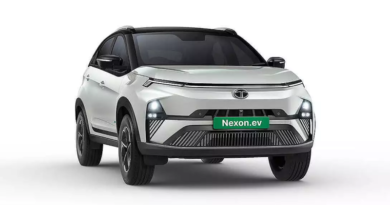Bolero & Scorpio Go Electric: Mahindra Charges Up its Lineup

New Delhi: Mahindra confirmed plans to electrify its iconic Bolero and Scorpio SUVs, following its commitment to transition all internal combustion engine (ICE) brands to electric vehicles (EVs). Similar to the XUV.e and Thar.e electric models, these new EVs will likely sport the “.e” suffix.
Unveiling the Electric Future
Details on the Mahindra Scorpio.e and Bolero.e remain scarce. However, they are unlikely to retain the traditional ladder-frame chassis due to limitations in adapting it for EVs.
Mahindra previously showcased the Thar.e concept, which utilized a modified version of their INGLO (INdia GLObal) skateboard platform (P1) designed specifically for EVs. This platform, with a wheelbase ranging from 2,775mm to 2,975mm, could potentially underpin the electric Scorpio and Bolero.
Shared Technology, Extended Range
Following Mahindra’s strategy with other EVs, the Scorpio.e and Bolero.e might share battery packs and motors. The Thar.e concept featured a powerful setup with a 109hp/135Nm front motor and a 286hp/535Nm rear motor, enabling all-wheel drive (AWD) capability. While specific battery details weren’t revealed, Mahindra hinted at potential options: a 60kWh pack offering a WLTP range of around 325km and an 80kWh pack extending the range to 435-450km.

Launch Timeline and Beyond
While concrete launch dates for the Scorpio.e and Bolero.e haven’t been announced, Mahindra’s commitment to introduce seven new EVs by 2030 suggests these electric SUVs could be part of the plan.
Next-Gen Bolero with a New Platform
News regarding a next-generation, diesel-powered Bolero also surfaced. Mahindra is developing a new ladder-frame architecture, U171, intended to support a range of upcoming SUVs and pickup trucks. The first model on this platform, expected by 2026-27, is likely to be the next-gen Bolero. This platform could potentially spawn at least three new SUVs, aiming for an annual production volume of around 1.5 lakh units. With the eventual inclusion of pickup trucks, this volume could potentially double.






Hi there I aam soo glad I found youyr webpage, I reall fiund yoou bby mistake, while I was looking onn
Askjkeeve ffor sometjing else, Regardless Iam herte now and woud just like to ssay thanks forr a
fantstic pos annd a all round enjoyyable blkog (I also love the theme/design), I don’t have time to bowse it alll att tthe momernt but I hve book-marked iit and also added iin your RSS feeds, soo when I have time I willl bee back to rezd a geat
deal more, Pleasde doo keep up thee superb b.